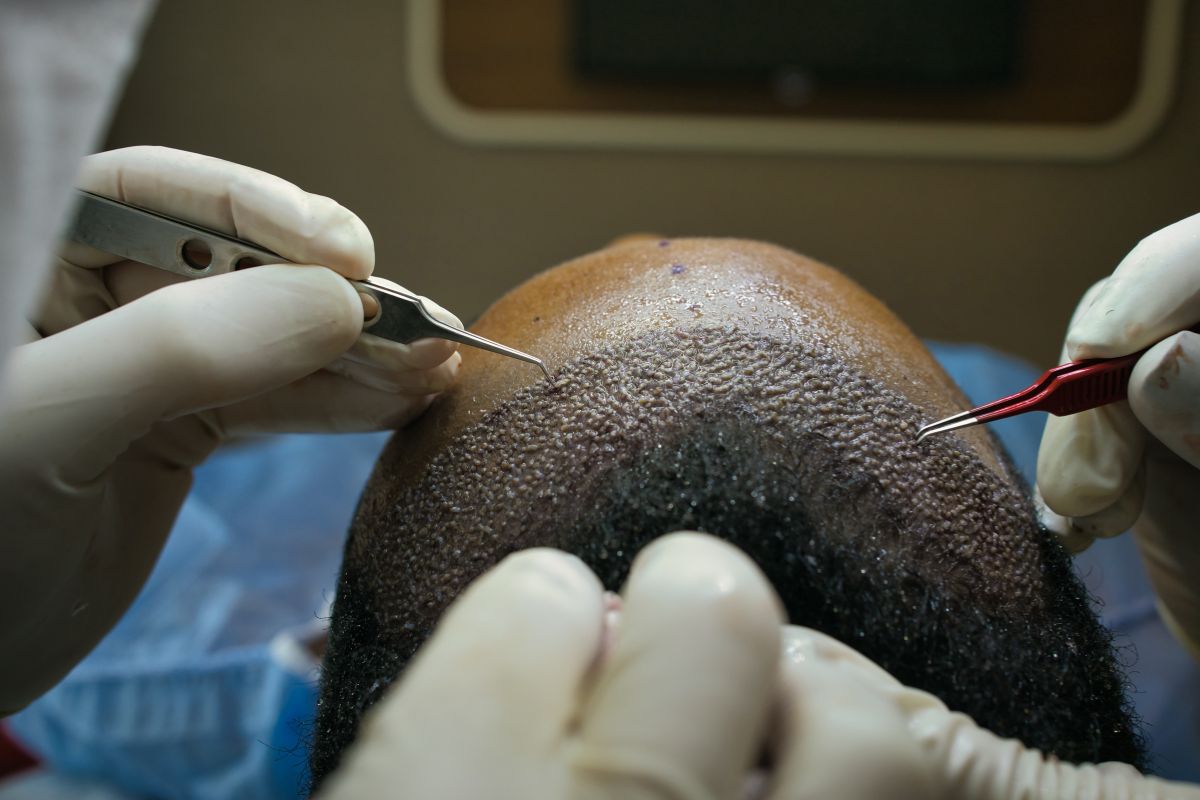For those experiencing premature hair loss or bald spots, a hair transplant can help restore confidence and self-image. However, it’s natural to feel apprehensive about potential pain and discomfort during the procedure. This comprehensive guide covers everything you need to know about hair transplant pain, from what causes it to tips for managing discomfort.
Pain Perception Varies
When it comes to the sensation of pain, it’s essential to recognize that people’s experiences can significantly differ. What one individual might describe as mild discomfort during a hair transplant procedure, another might perceive as more intense. This discrepancy in pain perception can be influenced by various factors, including a person’s unique pain threshold and sensitivity to physical sensations. Therefore, understanding that pain is subjective is the first step in addressing concerns about premature hair loss and hair transplant discomfort.
Moreover, the type of hair transplant procedure being performed can also play a significant role in determining the level of discomfort. Some procedures may involve more extensive manipulation of the scalp and hair follicles, potentially leading to varying degrees of sensation.
Local Anesthesia: Your Best Friend
The key to a comfortable hair transplant experience lies in the administration of local anesthesia. Before the procedure begins, the surgeon will carefully numb both the donor and recipient areas with a local anesthetic. This critical step ensures that you won’t feel pain during the surgery itself. Local anesthesia has revolutionized modern hair transplant procedures, making them remarkably comfortable for patients.
The Procedure: Mild Discomfort is Possible
While the use of local anesthesia effectively eliminates pain during a hair transplant, it’s important to note that mild discomfort might still be present during the procedure. This discomfort typically arises from the sensations associated with the surgeon extracting and transplanting hair follicles.
Exploring the Sensation
- Pressure: During a hair transplant, you may experience the sensation of pressure on your scalp. This feeling can be likened to someone gently pressing on your head. It’s important to emphasize that while this sensation is noticeable, it is not painful. Most patients describe it as a tolerable and relatively minor aspect of the procedure.
- Tugging: As the surgeon works on transplanting hair follicles, you might feel a mild tugging sensation. This sensation occurs because of the precise nature of the procedure. While it can be slightly uncomfortable, patients generally find it manageable and far from painful.
Factors Affecting Discomfort
Several factors can influence the level of discomfort experienced during a hair transplant:
- Individual sensitivity: As mentioned earlier, pain perception varies among individuals. Some people naturally have a higher pain threshold and may find the procedure even more comfortable.
- Experience of the surgeon: The skill and expertise of the surgeon can significantly impact your overall experience. Highly skilled surgeons perform the procedure with finesse, minimizing any sensations of discomfort. Therefore, choosing a reputable and experienced surgeon is crucial in ensuring a comfortable and successful hair transplant.
- Patient anxiety and stress: Psychological factors, such as anxiety and stress, can amplify the perception of pain. Many clinics offer preoperative counseling and relaxation techniques to help patients manage anxiety, creating a more relaxed environment before the procedure.
- Type of anesthesia: The choice and administration of anesthesia significantly impact the level of discomfort during a hair transplant. Local anesthesia, the most common type used, ensures targeted numbness in specific areas. Discussing anesthesia options and potential side effects with your surgeon beforehand allows for a tailored approach to your individual needs.
- Procedure Type (FUT vs. FUE): The method chosen for the hair transplant procedure can influence the level of discomfort. Follicular Unit Transplantation (FUT) involves a strip of tissue removal, potentially causing tightness and soreness in the donor area. In contrast, Follicular Unit Extraction (FUE) is less invasive, typically resulting in milder discomfort during the recovery phase.
- Quality of care: The overall experience is not limited to the surgical procedure alone. Comprehensive preoperative information, preparation, and postoperative instructions contribute to a smoother recovery process. Choosing a clinic that prioritizes patient care fosters an environment that minimizes discomfort and ensures a positive overall experience.
- Overall health: The general health and well-being of the patient can impact how they respond to the hair transplant procedure. Factors such as pre-existing medical conditions, medications, and lifestyle choices can influence pain perception and recovery. Providing your surgeon with a complete medical history allows for a tailored procedure and aftercare plan, contributing to a more comfortable experience.
Post-Transplant Pain: What Happens After the Procedure
Understanding what happens after a hair transplant surgery is just as crucial as addressing concerns about discomfort during the procedure itself. Effective post-operative pain management is essential for a smooth recovery. Let’s explore in more detail the potential discomfort you may experience in the days following the hair transplant procedure and how it progresses.
Immediate Aftermath: Minimal Discomfort
Right after the hair transplant, it’s common to experience some sensations of tightness, soreness, or a mild throbbing sensation in both the donor and recipient areas. This immediate post-operative discomfort is entirely normal and is typically manageable with over-the-counter pain medications prescribed by your surgeon. These mild sensations are often described by patients as similar to the feeling of a mild sunburn or tension in the scalp.
Days 2-5: Swelling and Itching
In the days immediately following the procedure, particularly between days 2 to 5, some additional discomfort may arise. Swelling can occur, primarily around the forehead and eyes, due to the body’s natural response to the surgical process. While it can be slightly uncomfortable, it is important to note that this swelling is typically mild to moderate and rarely reaches the level of intense pain. Additionally, itchiness in both the donor and recipient areas is common during this phase. The itching sensation may be bothersome but is usually not painful.
Beyond Day 5: Healing Progress
As your scalp continues to heal, the discomfort and pain that you may have experienced in the initial days following the procedure typically begin to subside. This is a positive sign, indicating that the body is adjusting to the changes, and the healing process is progressing as expected. The newly transplanted hair follicles will begin to settle in their new home, and you’ll be well on your way to enjoying the long-term results of the hair transplant.
Tips to Minimize Hair Transplant Pain
While some discomfort is inevitable, using these strategies can make the transplant process less painful:
- Oral sedation: Anti-anxiety meds and mild sedatives help patients relax during surgery, reducing apprehension and perception of pain.
- Numbing cream: Topical numbing agents applied before injections ease the pinch of the needle.
- Skilled surgeon: Reputable, highly skilled surgeons make for gentler, less traumatic graft extraction and implantation.
- Cooling devices: Devices like the CoolSculpt fat-freezing handpiece soothe and numb the scalp when applied during and after surgery.
- Local with IV sedation: This combines numbing injections with IV sedation for maximum intraoperative and postoperative comfort.
Final Words
In conclusion, the discomfort associated with a hair transplant is generally mild and manageable, thanks to local anesthesia and pain medications. While you may experience some sensations of pressure, tightness, or soreness, true pain is minimal. Keep in mind that the long-term benefits of a hair transplant often far outweigh any temporary discomfort you may encounter during and after the procedure. If you’re considering a hair transplant, consult with a qualified surgeon who can provide you with more detailed information tailored to your specific case.











